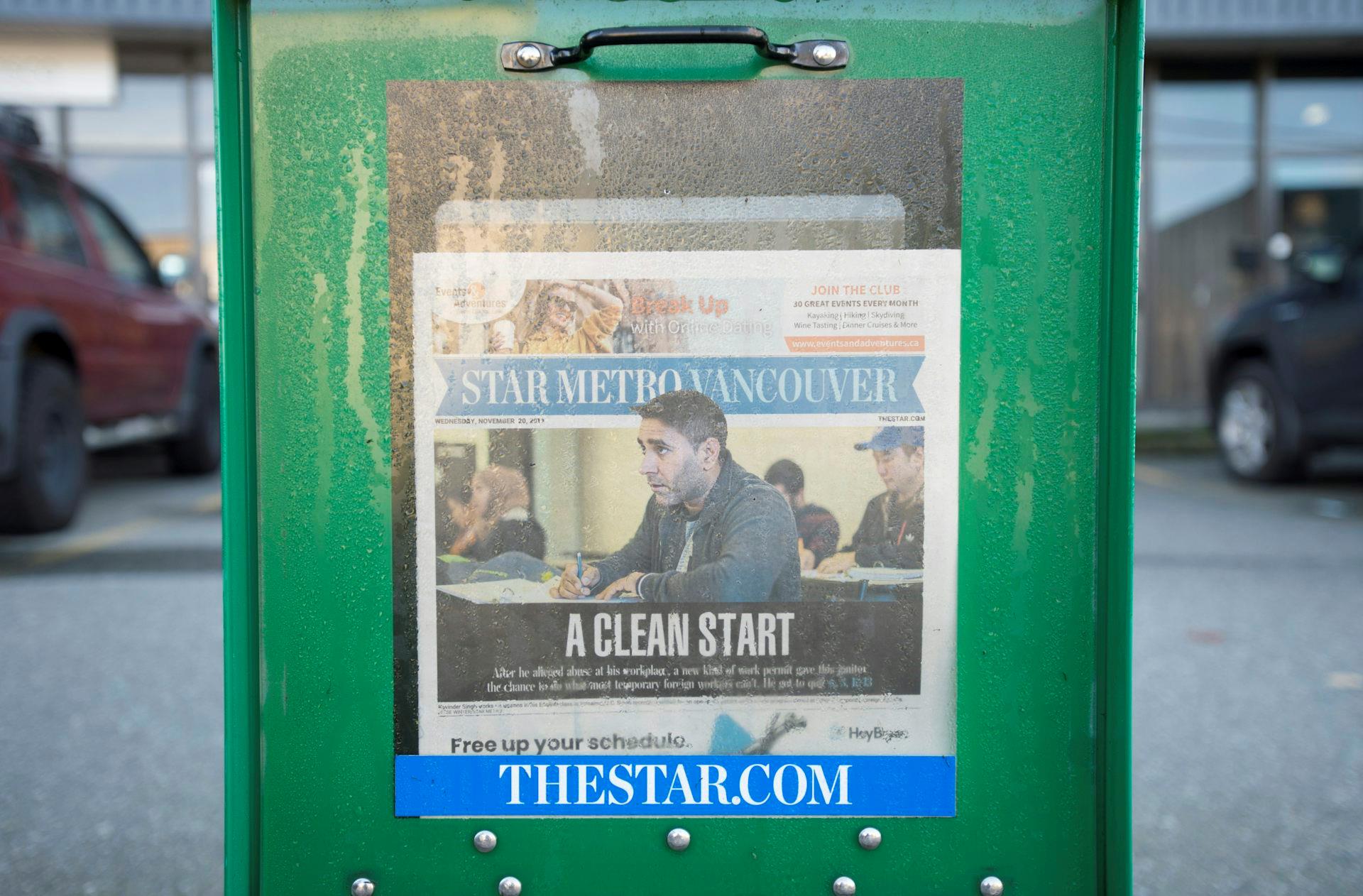
What 'The Paper' Reveals About Local News And Journalism Today
It's a community institution with a storied past but a precarious future - in recent years, the paper has relied almost exclusively on news wire articles and clickbait entertainment to meet its bottom line.
Ned makes a declaration while standing on a desk, as a documentary film crew records it all:
It's meant to be an uplifting moment, with the earnest but inexperienced leader insisting that good journalism can make the paper profitable again. But, even as some colleagues respond with cautious optimism (if not skeptical curiosity), the episode ends by cutting back to an earlier gag - a nearby building has been on fire the entire time, unnoticed and unreported.
It's an apt, if unsettling, metaphor for the state of local news in North America, where so many outlets have vanished that residents often don't know what's happening in their own backyard.
Trailer for 'The Paper.' Alarming rate of collapse
Local newspapers are collapsing at an alarming pace. In Canada, more than 500 outlets have closed since 2008 , affecting more than 370 communities, according to the Local News Research Project .
In the United States, the number exceeds 2,800 closures since 2005 , based on research by Northwestern University's Medill School of Journalism.
The result is what scholars call“news deserts” - places where no professional local news source remains to cover councils, courts or communities.
The causes of this decline are multifaceted. Reporters and editors need to be paid, newsrooms need resources and investigative journalism is costly and time-consuming. Print advertising, once the financial lifeblood of local papers, has been in steep decline for years as businesses moved their spending to platforms like Google and Facebook.
That collapse in revenue left papers more dependent on digital ads and subscriptions, neither of which has filled the gap. According to the Florida-based Poynter Institute for Media Studies, local news websites saw about a 20 per cent drop in page views and unique visitors in 2022, undercutting the ad impressions needed to sustain online revenue.
Patchwork assistanceCanadian news organizations have sought compensation for the ways tech platforms profit from news content. Google reached a deal with the Canadian government to provide $100 million annually for five years to domestic publishers in exchange for an exemption from the Online News Act, which allows continued access to Canadian news links.
As Gretel Kahn with the Reuters Institute reports , some Canadian outlets - including The Conversation Canada - have begun to benefit from these payments . The money is disbursed by the Canadian Journalism Collective , a federally incorporated nonprofit.
However, the effects are uneven: larger corporate chains such as Postmedia and Torstar are getting most of the support, while smaller independent and local publishers receive far less. This patchwork assistance offers temporary relief but does little to fix the deeper imbalance in how digital advertising profits are distributed.
Expectation of free newsAudiences have now grown accustomed to receiving news instantly and for free, often through social media feeds or aggregators rather than directly from a newspaper. Younger readers in particular encounter news on platforms like TikTok, Instagram or YouTube, where entertainment and opinion often overwhelm verified reporting.
Read more: More Canadians are paying for news this year, but it's still too early to celebrate
In this environment of declining ad dollars and fragmented attention, local outlets are trying harder than ever to convince audiences their work is worth supporting. This is the tension The Paper plays for laughs.
Throughout the series, the characters contend with all manner of challenges as they strive to keep their newspaper relevant and viable. They get scooped on major stories by a teenage blogger. They struggle to decide whether to chase sensationalism that attracts eyeballs or invest in reporting that actually matters. They try to revive accountability coverage by investigating local businesses but must tread carefully not to alienate the few remaining advertisers willing to support them.
Reporters as underdogs?On screen, journalists have often been depicted as crusaders for truth - from All the President's Men to Spotlight to The Newsroom . Even shows and films that explore the darker side of the industry, like The Wire , Bombshell or Tokyo Vice , frame journalism as a profession of serious consequence and high-stakes drama.
The Paper suggests something different: reporters not as larger-than-life figures, but as struggling underdogs doing their best and often getting it wrong. On one hand, this risks trivializing the work of local journalists at a time when the survival of their industry is already in doubt.
For real reporters, it's no laughing matter. A 2022 Canadian study found many are experiencing high rates of burnout, anxiety and online harassment. In 2021, in the U.S., newsroom employment had fallen by more than a quarter since 2008 , with those left behind facing heavier workloads as colleagues were laid off.

A StarMetro newspaper is pictured in a newspaper box in North Vancouver, in November 2019. The last editions of the free commuter paper, formerly published in Halifax, Vancouver, Calgary, Edmonton and Toronto, were issued in December that year, as the paper was shut down. THE CANADIAN PRESS/Jonathan Hayward
The loss of reporters has created gaps in coverage of councils, courts and communities that once formed the backbone of civic accountability.
Heartfelt missiveOn the other hand, when it's at its best, The Paper is a heartfelt missive about why local journalism has always mattered: that despite its sometimes dysfunctional newsroom, the reporters are people who truly understand and care about the community they cover because they live there too.
This kind of connection has long been a foundation for building public trust and encouraging dialogue. But it has been severely eroded as outlets close and news deserts spread.
Research shows that as local news declines, so does voter turnout, civic engagement and political accountability .
The Paper doesn't pretend to solve the seemingly insurmountable problems facing local news, but it does capture the messy reality of trying to do the job. In a moment when journalists are often idealized or demonized, showing them as flawed but dedicated may not be comforting - but it may be closer to the truth.

Legal Disclaimer:
MENAFN provides the
information “as is” without warranty of any kind. We do not accept
any responsibility or liability for the accuracy, content, images,
videos, licenses, completeness, legality, or reliability of the information
contained in this article. If you have any complaints or copyright
issues related to this article, kindly contact the provider above.


















Comments
No comment